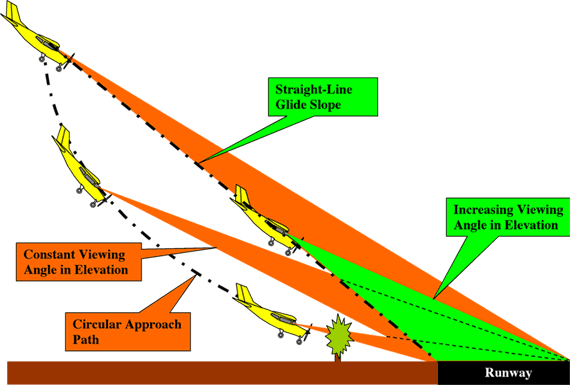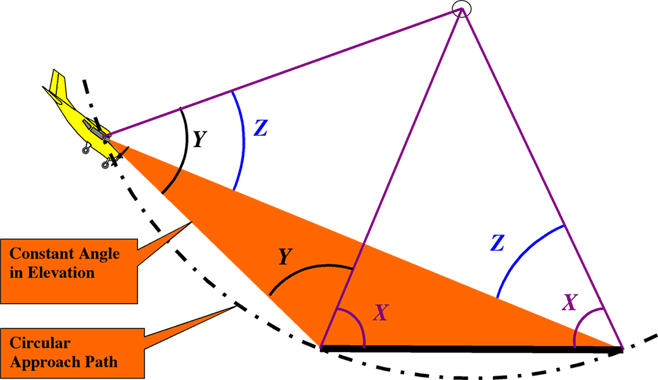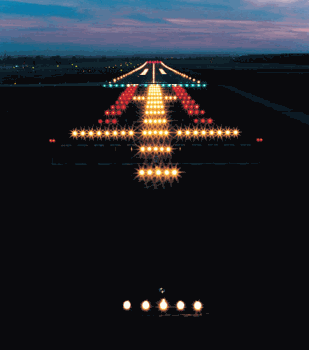|
Metaphorical
Pun. |
|
|
|
It is tempting for the pilot to maintain a constant viewing angle of the runway. However, that policy produces one of aviation's more pernicious counter-intuitive results. The vertical approach path will not be a straight line but a curve -- the arc of a circle, in fact. The plane will descend below the straight-line glide slope. Approaching the ground, the pilot will necessarily have to apply sufficient power to keep from touching down short of the runway -- or worse.
And then, and then... The pilot that night
was not thinking back to the 1940s and a certain
geometry class and one homework problem. The
assignment was to prove that a given chord on a
circle subtends a constant angle as measured from
any point on the circumference of the circle.
The whole class groaned, of course. Nothing
could be less meaningful to a teenager. Let us
retrospectively apply geometry to the Sloping in
the Dark
puzzle. One of those chords represents the runway, and it is fixed. So is X, the angle appearing twice, once at each end of the runway. Angle X is subtended by radii of the circle. Another chord coincides with the pilot's view of the runway threshold, and Y appears twice, both times subtended by radii of the circle. Finally, a chord of the circle coincides with the pilot's view of the far end of the runway, with Z being the angle appearing twice between that chord and respective radii of the circle. The angle that interested those geometry students back in the '40s and should have interested one of them in the '60s is Y - Z, the angle subtended by the runway itself. The angle Y - Z can be derived by taking a walk around the orange triangle adding up the angles as follows:
Sophisticated solvers
know that the three angles of any triangle always
total
...and since every term
on the righthand side
of the equation is constant, the angle Y
- Z is constant, QED (quod erat demonstrandum
"which was to be demonstrated"). Holding Y
- Z constant results in an unwanted
steepening of the approach. Bummer.
Epilog A handful of non-pilot solvers have complained that they were misled by memories of their most recent happy-landing experiences characterized by the airliner gently pitching up just before touchdown.
Landings on aircraft
carriers do not use much flare. Neither,
apparently, do some of the world's airlines.
|



